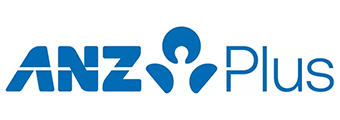
Waiting days for bank transfers is a thing of the past. With Osko and the New Payments Platform (NPP), money moves between Australian bank accounts in near real-time.
Since launching in 2018, Osko, powered by the NPP, has made online banking faster and more convenient. Learn how Osko payments work, how PayID fits in, and whether your bank offers real-time payments using Osko.
What is Osko?
Osko, in short, is a fast, easy, and convenient way to transfer money between bank accounts using Australia's New Payments Platform (NPP).
Introduced in February 2018, Osko was developed by payments platform BPAY, which allows individuals and businesses to transfer funds in real-time. Osko enables customers to make payments from one bank account to another in under a minute by either using a BSB and account number (in which we've all become accustomed) or a PayID (more on that to come).
With Osko, you have real-time clearing and settlement, 24 hours a day, seven days a week. You don't have to restrict your financial dealings to banking hours. Your payments will also have much more data attached to them than ever before. Osko gives you up to 280 characters to describe the payment, including who it’s for and what it’s for.
Both Osko and PayID are features of the NPP, which was developed by the Reserve Bank of Australia and several retail Australian Banks.
What is PayID?
PayID allows you to use a unique identifier for your bank account, which you can replace with your BSB and account number. Your PayID can be your mobile number, your email, or your ABN. To receive money, you just need to provide the payer with your PayID. Essentially, it saves the hassle of having to constantly hand out your account details. Your bank will invite you to set up your PayID via your internet banking or mobile banking app.
How does Osko work?
The process is fairly simple. If your financial institution has partnered with Osko, your online banking app will already have the feature available.
When you're ready to transfer money to an account, you’ll have two options for sending it: traditional account details (BSB and account number) or a PayID.
Once you've selected the recipient and entered the amount, simply confirm the payment, and you'll see the transaction appear with the Osko logo. The account you sent funds to will receive the money almost instantly.
Which banks are using Osko?
As expected, the big-four banks - NAB, CommBank, ANZ, and Westpac - all support Osko for real-time payments.
Here is a list of other banks and lenders that offer fast transfers using Osko:
| AMP | Horizon Bank |
| Australian Military Bank | Hume Bank |
| Australian Unity | Illawarra Credit Union |
| Bank Australia | IMB Bank |
| Bank First | ING |
| Bank of Melbourne | ME Bank |
| Bank of us | MOVE |
| BankSA | MyState |
| BankVIC | Newcastle Permanent |
| Bankwest | P&N Bank |
| BCU | People's Choice |
| Bendigo Bank | Police Credit Union |
| Beyond Bank | QBANK |
| Border Bank | Qudos Bank |
| Citi (now NAB) | Regional Australia Bank |
| Coastline Credit Union | South West Credit Union |
| Credit Union SA | St. George |
| Defence Bank | Suncorp |
| Family First Credit Union | Teachers Mutual Bank |
| G&C Mutual Bank | The Mutual |
| Greater Bank | UniBank |
| Great Southern Bank | Unity Bank |
| UBank |
Unfortunately, if you bank with the likes of Adelaide Bank, Heritage Bank, HSBC, RACQ Bank, and RaboBank, Osko is not available. There are more than 100 banks, credit unions, building societies and other institutions with banking licenses in Australia, so check the Osko website to see if yours has the feature.
However, just because they are not on Osko doesn't mean they don't offer fast payments. For example, HSBC and Heritage Bank use the New Payments Platform's feature called Single Credit Transfers, and these can also be made near instantly. But it usually needs to be under a certain amount, say $1,000, for it to be cleared in near real-time.
Bank Savings Account Base Interest Rate Max Interest Rate Total Interest Earned Introductory Term Minimum Amount Maximum Amount Linked Account Required Minimum Monthly Deposit Minimum Opening Deposit Account Keeping Fee ATM Access Joint Application Tags Features Link Compare Promoted Product Disclosure
then 1.55% p.a.
Rate varies on savings amount.
Rate varies on savings amount.
What is the difference between PayID and Osko?
While PayID and Osko can be used interchangeably for sending and receiving money, they are slightly different.
- Osko enables you to send and receive money almost instantly, even if you don't bank with the same lender. When you send money to someone, an Osko logo will pop up, letting you know the transfer was made via Osko.
- PayID is a unique identification (phone number or email address) for your bank account that can be used instead of a BSB and account number when sending money.
A bank can offer Osko payments without offering PayID, and vice versa. For example, Heritage Bank currently supports PayID and not Osko.
How to spot a PayID scam
PayID scams most commonly present themselves on second-hand online marketplaces such as Gumtree and Facebook Marketplace.
According to NAB, about a third of reported scams involved trying to exploit PayID. Common ways scammers try to exploit PayID include:
- An online buyer or seller pushing to use PayID almost straight away
- Asking for money to upgrade an account or to access PayID
- Being requested to send money first via PayID to confirm a sale (e.g. a deposit or delivery charges)
- Receiving texts or emails fraudulently asking to confirm or update your PayID details - PayID or your bank will never send you an email or text asking for personal login details
If a scammer tends to push for PayID straight away if you're selling something, it's best to report the message if you suspect it's a scam. Further, if someone texts or calls claiming they're from your bank and asks for banking details, it's safest to hang up and call the bank again directly.
As payments are now delivered in near real-time, it can be very hard to get your money back once you've lost it to a scammer. Various banks have introduced verification to mitigate the rise of scams, and there has recently been a push to implement a uniform approach to detailed verification.
NAB banking executive Rachel Slade calls this helpful friction.
"Helpful friction needs to be targeted and appropriate, it needs to protect customers while allowing them to transact how they want, and it needs to identify the right transactions that need extra scrutiny – giving customers a prompt to pause," Ms Slade said.
Frequently asked questions
Is PayID safe and secure from hackers?
Yes, your PayID and your funds are safe; they're protected by your bank's existing fraud-detection processes. However, you should be wary of online buyers or sellers asking for PayID details straight away - this could be a scam.
How do I know I'm sending the money to the right place or person?
NPP offers users a payee-validation function so that you can see and check the information of the person, business or institution you're sending the money to. You should always take a few seconds to do this before finalising the transaction.
Are there limits to how much I can send?
Most banks have a daily limit for PayID transactions to limit any damage from fraud. These limits usually range from $2,000 to $20,000 per day - you can confirm this with your bank. Higher amounts may require getting in contact with your bank.
Can I send money overseas?
No, your PayID can only be used for domestic payments.
Can I link my PayID to another of my accounts?
No, you can only link your PayID to one account at a time. However, you can have multiple PayIDs with different financial institutions - again, each PayID can only be linked to one account. For example, if your email was joe.bloggs@infochoice.com.au, you can only use that email as a PayID on one account.
To whom can I make an Osko payment?
You can make an Osko payment to any account as long as the bank supports Osko payments. For example, if you bank with ANZ and wish to send money to someone who banks with Heritage Bank (which does not yet have the feature), Osko payments will not be supported.
However, in this instance, if someone sends an Osko payment to a non-participating bank, these will automatically be converted into a Single Credit Transfer (SCT) if it's supported, which acts in a similar way. Failing that, the traditional transfer window applies, which can take a few days.
First published in January 2023




